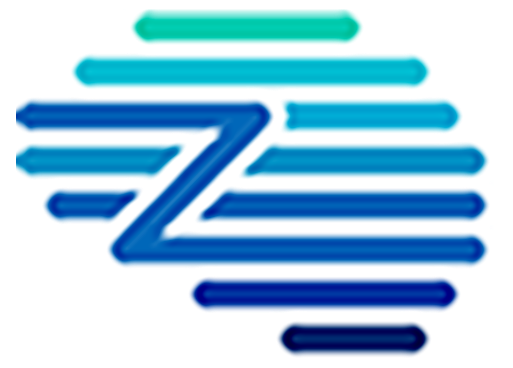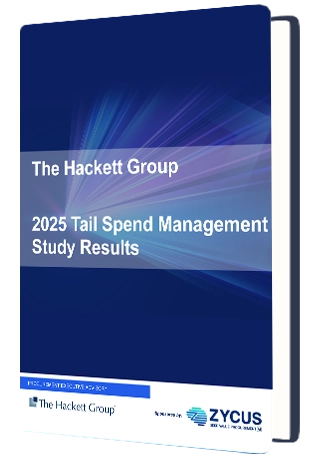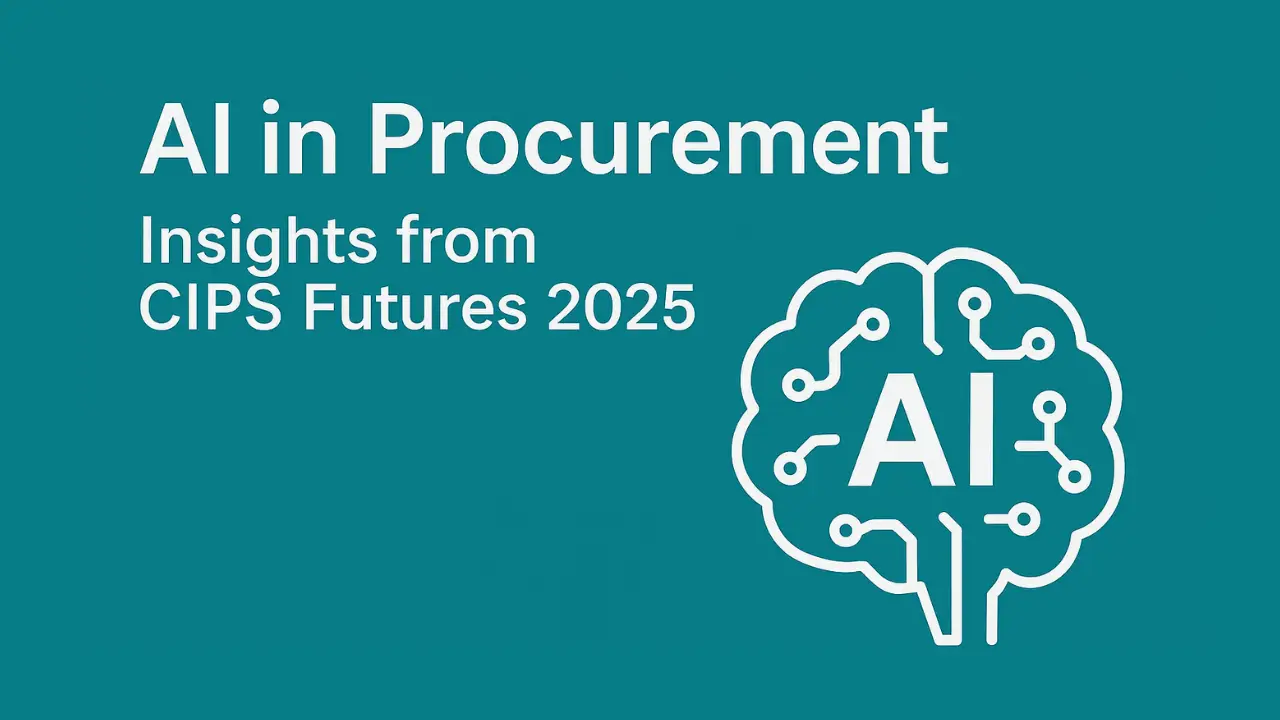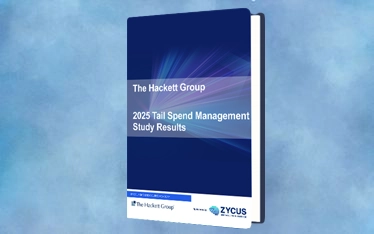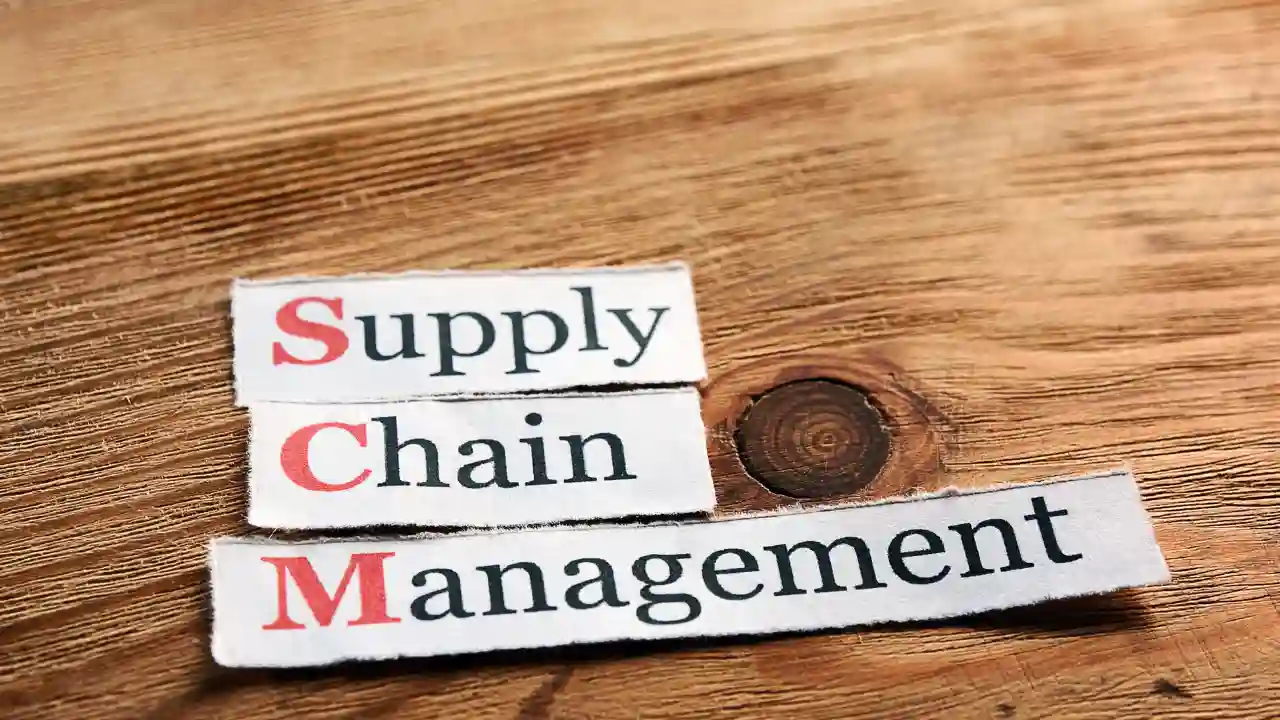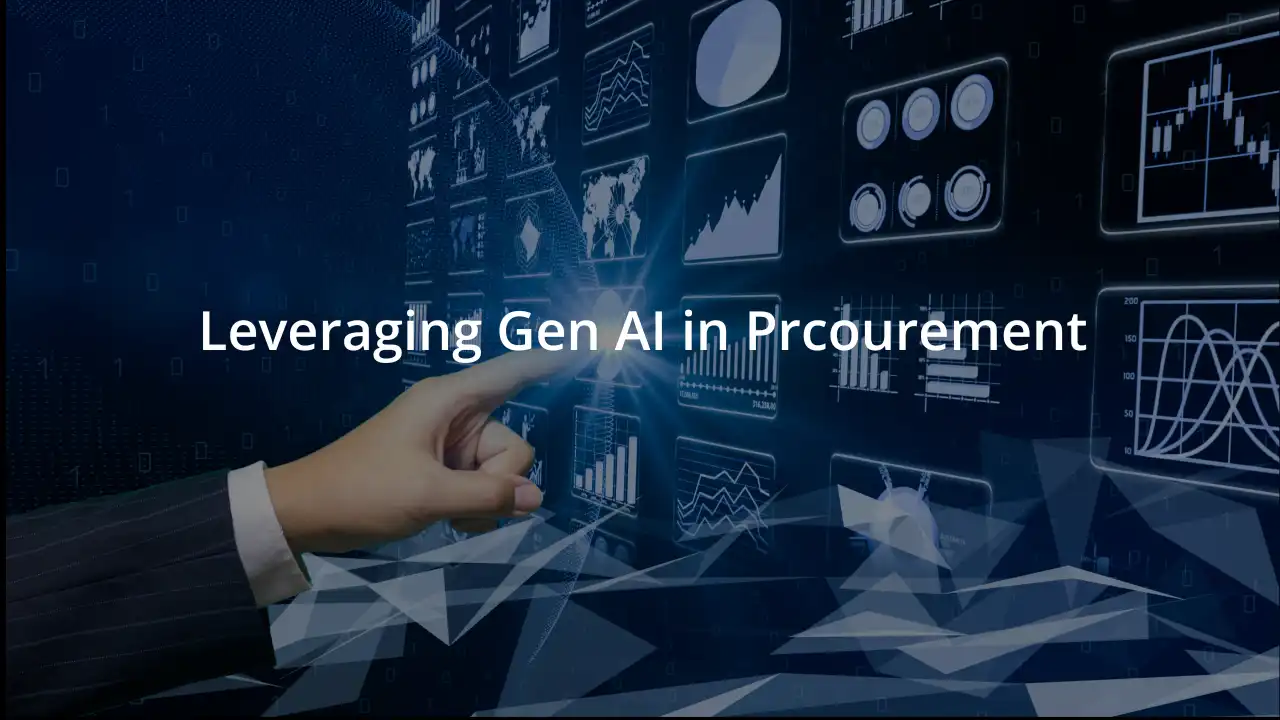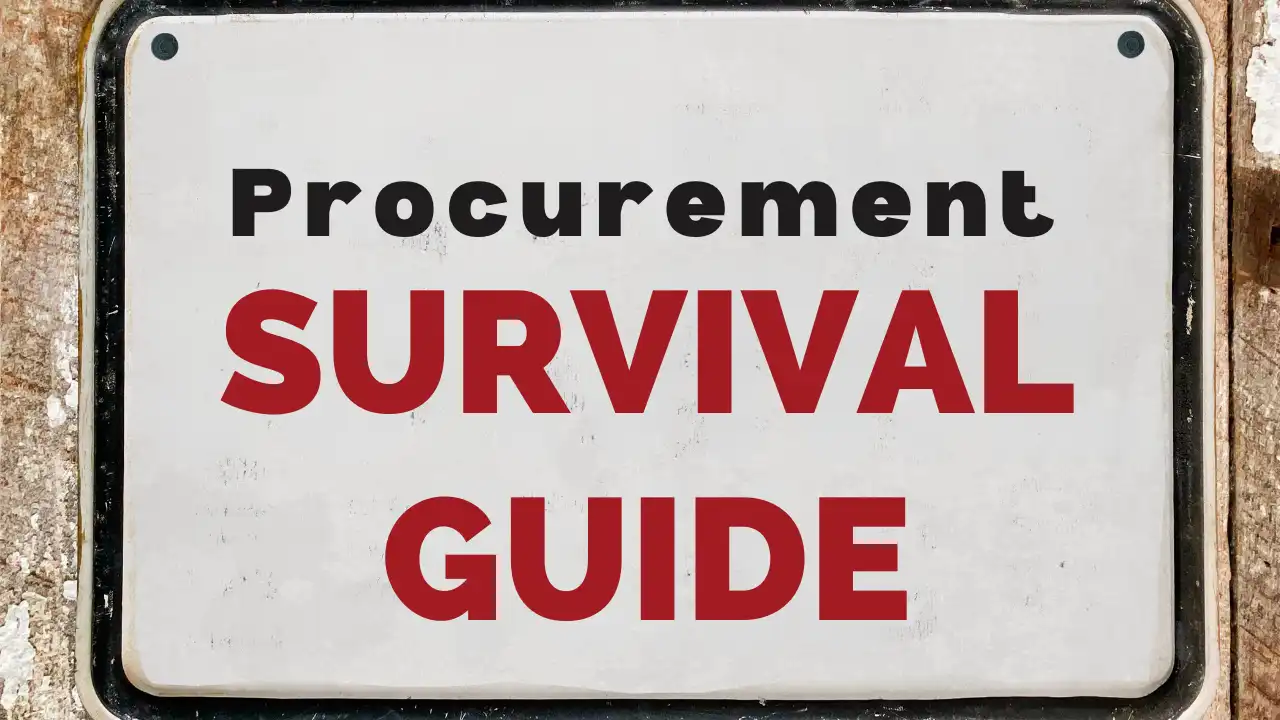TL;DR
- AI in Procurement is Real & Ready: Procurement teams are moving from pilots to enterprise-scale adoption, unlocking speed, savings, and strategic value.
- AI Agents = Competitive Edge: Zycus’s Merlin Agentic AI automates sourcing, negotiation, intake, and risk tracking—cutting cycles by up to 40%.
- Europe Must Act Fast: Only 16% of EU companies have scaled AI; early movers gain resilience and compounding benefits.
- Procurement’s Role is Expanding: AI enables teams to shift from operations to orchestration—freeing humans to drive innovation and ESG.
- The Road to 2050 is Collaborative: Success hinges on visionary leadership, responsible AI adoption, and ecosystems that share, learn, and scale.
On July 1, 2025, I had the privilege of speaking at the CIPS Procurement & Supply Futures Conference in London. As Vice President EMEA at Zycus, I joined a Vision 2050 panel titled “AI in action: agents, adoption and insights.” The session was a deep dive into how AI in procurement is evolving from buzzword to business reality. European procurement professionals packed the room – a clear sign that digital procurement transformation is top-of-mind across the industry. In this blog, I’d like to reflect on the key themes we explored: how AI (and specifically AI agents) are shaping the future of procurement, real-world examples of these technologies in action (including our own Zycus Merlin Agentic AI), and the importance of collaboration and innovation as we journey toward 2050.
AI in Procurement Today: From Hype to Reality
One resounding message from our discussion was that AI is no longer just hype – it’s delivering real value in procurement today. We went beyond the buzz to talk about what’s actually working. From automated spend analysis to smart contract review, AI-driven solutions are helping teams reduce manual work and make better decisions. In fact, procurement teams using next-generation AI report up to 30–50% faster cycle times and ~35% fewer errors in processes, thanks to real-time responsiveness and machine learning-based validation. These aren’t theoretical benefits; they’re being realized now, turning procurement from a back-office cost center into a strategic value driver.
Europe, in particular, finds itself at a crossroads. We discussed recent research showing that only about 16% of European companies have adopted AI at scale, lagging behind peers in the U.S. and China. This AI adoption gap came up as a concern – but also as an opportunity. Culturally, many European firms have been cautious, navigating strict regulations and legacy systems. Yet the consensus on our panel was clear: waiting is no longer an option. As one report put it, “Act now to stay competitive – early adopters gain compounding advantages in efficiency and resilience.” In other words, those who embrace AI sooner will be more agile and better prepared for disruptions. I emphasized that procurement leaders should start with focused pilots, learn fast, and scale what works. With AI now foundational to efficiency, risk management and agility, the question isn’t if we implement AI – it’s how soon.
AI Agents Driving Digital Procurement Transformation
A core theme of the panel was the rise of AI agents – autonomous or semi-autonomous digital assistants that can perceive, decide, and act within procurement workflows. These intelligent agents are game-changers, allowing us to move from basic automation to true orchestration of complex tasks. For example, an AI agent can continuously monitor spend and supplier data, and then automatically execute optimal purchasing actions or alert humans to risks, essentially acting as a tireless team member. Such agents are always-on digital colleagues that handle routine sourcing steps (like RFQs, bid analysis, approvals) and even adjust strategies in real time to ensure agility and cost efficiency.
In our discussion, we explored how these AI agents in supply chain and procurement operations can tackle today’s biggest challenges. Panelists noted that many CPOs are looking to AI for help with reducing supplier risk, managing supply chain disruptions, and countering inflationary cost pressures. Indeed, AI agents can play a pivotal role in supply chain agility – by rapidly analyzing market changes (e.g. tariffs, shortages) and autonomously reordering or suggesting alternate suppliers, they help organizations respond faster to volatility. One statistic I shared on stage: 90% of procurement leaders have already considered or are deploying AI agents in 2025, signaling that the concept of an “AI co-worker” is quickly moving from pilot to mainstream. This aligns with what we see at Zycus: after implementation, AI becomes a strategic priority, with two-thirds of leaders making AI-driven decision-making a top goal for their teams.
The transformative impact of AI agents on digital procurement transformation cannot be overstated. We’re talking about potentially automating up to 70% of routine procurement tasks – think of the hours freed up when intake requests, data entries, and compliance checks run themselves. By some measures, leveraging advanced AI can cut sourcing cycle times nearly in half and uncover 12–15% in new savings opportunities across spend categories. Additionally, shifting to AI-augmented processes improves governance; for instance, agents embedded in P2P can enforce policy compliance and reduce off-contract spend before it happens. The net result is procurement teams that are faster, leaner, and more strategic. Rather than chasing paperwork, your team can focus on supplier strategy, innovation, and sustainability initiatives. This point really resonated with the audience, given how much pressure procurement is under to deliver not just savings but also value in areas like ESG and risk management.
Real-World Applications: Zycus Merlin Agentic AI in Action
Naturally, I was excited to highlight some real-world applications of AI that we’re seeing through Zycus’s Merlin Agentic AI platform. Zycus has been a pioneer in embedding AI across the entire source-to-pay lifecycle. Our Merlin platform introduces a suite of purpose-built AI agents that work alongside procurement professionals. For example, the Merlin Autonomous Negotiation Agent (ANA) can run sourcing events end-to-end – it identifies the right suppliers, issues RFQs/RFPs, negotiates on predefined criteria, and recommends awards. Organizations using these AI-driven sourcing bots have cut sourcing timelines by up to 40%, and consistently capture savings through data-driven negotiations. Another example is the Merlin Intake Agent, a conversational assistant that interacts with business users to capture their purchase requests in natural language. This agent intelligently classifies and routes requests, guiding users to approved suppliers and contracts. The outcome? Procurement intake and requisition processes are handled 60% faster, with greatly improved user satisfaction for internal stakeholders. By automating these front-end tasks, one of our European customers saw a 38% reduction in sourcing lead times and a 60% increase in catalog utilization within just 90 days of deployment – a testament to quick wins from AI adoption.
Crucially, these AI agents don’t operate in silos; they collaborate and learn. A Buyer Agent can work with an Accounts Payable Agent – one checks a purchase against contracts and budgets, while the other validates the invoice and payment, for instance. Through our Merlin Agentic AI Platform, such agents share a common intelligence so they continuously improve and coordinate across the process. This orchestration yields compound benefits. Companies deploying Merlin AI have managed to automate 70% of their procurement workflows and refocus that capacity on strategic projects, while also uncovering hidden savings and cost avoidance averaging 12% across categories. They’re also seeing broader improvements like a 25% boost in supplier collaboration efficiency (e.g. more innovation and joint sustainability initiatives with suppliers) and up to 35% lower supplier risk exposure. These outcomes underscore that AI isn’t just about doing the same things faster – it enables procurement to do things differently. When routine tasks are handled by AI agents, humans in procurement can deepen supplier relationships, drive innovation, and ensure initiatives like sustainable procurement get the attention they deserve.
It’s worth noting that adopting AI agents is as much a journey as it is a technology deployment. During the panel, we talked about the need for strategic, ethical, and practical adoption. This means setting clear objectives (what value are we trying to unlock?), ensuring data quality and governance, and bringing people along through change management. At Zycus, we’ve learned that champion-led rollouts and intuitive UX are key – for instance, our Merlin Agents integrate with everyday tools like Teams/Slack to encourage user adoption, a practice that has increased engagement by 20% in some rollouts. We also build guardrails like role-based access controls and audit trails into our AI actions, so autonomy never comes at the expense of compliance or trust. All of these real-world considerations make the difference between an AI pilot that fizzles out and one that scales into a new way of working.
Collaboration and Innovation: The Road to 2050
Perhaps one of the most inspiring parts of the Vision 2050 stream was the shared understanding that technology alone isn’t a silver bullet. The future of procurement – looking ahead to 2050 – will be shaped by collaboration, innovation, and a growth mindset across our profession. During our session, and others throughout the day, it was evident that procurement leaders are eager to break silos. Collaboration came up in multiple contexts: collaboration between procurement and suppliers to drive innovation, collaboration between different functions (like finance, IT, supply chain) to ensure AI solutions align with business goals, and even collaboration between organizations – sharing best practices so the whole industry advances.
Our panel itself was a microcosm of this collaborative spirit: I was joined by experts from consulting and sustainability backgrounds, and together we tackled the big questions of how to deploy AI responsibly and effectively. We agreed that visionary leadership plus open innovation will be key to navigating changes on the horizon. For example, as AI takes over transactional work, procurement teams must innovate in new value areas – whether that’s supplier diversity, circular supply chains, or strategic risk mitigation. In the Vision 2050 discussions, topics like supply chain resilience and sustainable procurement were recurring themes. AI can be a powerful enabler here (e.g. analyzing carbon footprints of your supply base or spotting human rights risks deep in the chain), but it requires procurement professionals to proactively apply these tools in pursuit of larger goals. The consensus was that by embracing continuous learning and co-innovation, we can ensure technology advancements like AI agents truly translate into a more agile, sustainable, and ethical supply ecosystem by 2050.
Another takeaway was the value of forums like the CIPS Futures Conference itself. The ideas shared in the room – success stories, cautionary tales, emerging trends – all help accelerate collective learning. As one attendee noted, procurement has gained a more permanent seat at the table in many organizations (a point highlighted in the latest CIPS Global State of Procurement report), and with that comes both opportunity and responsibility. We must raise our heads from day-to-day tactics and shape long-term strategy. That means investing in talent and technology, but also in relationships and knowledge-sharing. Personally, I left the event energized by the community of procurement innovators in Europe who are committed to pushing boundaries. If we keep this collaborative momentum, I have no doubt we will meet the ambitious vision set for 2050.
Embracing the Future: A Call to Action
In closing, my message to European procurement professionals is this: the AI revolution in procurement is here – it’s time to capitalize on it. Whether it’s leveraging AI agents to automate the mundane, using data-driven insights to inform decisions, or reimagining processes for greater sustainability and resilience, the tools are at our disposal. The panel reinforced that success lies in action: pilot that new AI use case, upskill your team, partner with innovators, and don’t let perfection delay progress. As I shared at the conference, the cost of inaction is growing every day; conversely, those who move now are positioning procurement to lead in the next era.
If you’re looking to kickstart your digital procurement transformation or accelerate an ongoing journey, I encourage you to explore how Zycus can support your goals. Zycus has been recognized by analysts for our leadership in this space, and our solutions – including the Merlin AI Agentic Platform – are enabling procurement teams worldwide to achieve rapid, meaningful improvements. AI in procurement isn’t science fiction anymore; it’s a strategic advantage waiting to be seized. Let’s embrace these innovations responsibly and boldly, and secure procurement’s future as a driver of value, agility, and positive change.
Ready to learn more about AI-powered procurement? Join us in this journey and discover how Zycus’s AI-driven solutions like Merlin Agentic AI can help unlock deep value for your organization. Together, we can transform procurement today and shape the future towards 2050.
Let’s make the future happen, now.
FAQs
Q1. What are AI agents in procurement?
AI agents are intelligent digital assistants that autonomously perform procurement tasks like sourcing, risk monitoring, and negotiation using machine learning.
Q2. How is Zycus using AI agents in real-world procurement?
Zycus’s Merlin Agentic AI platform deploys agents for intake management, autonomous negotiation, contract analysis, and sourcing event execution across the S2P cycle.
Q3. What are the benefits of AI in procurement?
Benefits include faster cycle times, increased compliance, hidden cost savings, better supplier collaboration, and proactive risk mitigation.
Q4. How does AI contribute to digital procurement transformation?
AI automates up to 70% of manual tasks, enabling real-time decision-making and transforming procurement into a strategic, data-driven function.
Q5. Is Zycus’s AI solution scalable for mid-sized European companies?
Yes, Zycus supports modular, scalable deployment of its AI agents to match the maturity and goals of mid-market and large enterprises across Europe.
Q6. What makes Zycus Merlin Agentic AI unique?
Zycus combines autonomous agents with enterprise-grade orchestration, enabling seamless collaboration between intake, sourcing, contracts, and AP processes.
Q7. How quickly can companies see ROI from implementing AI agents?
Enterprises using Zycus AI agents have reported measurable outcomes—like 40% faster sourcing cycles and 12-15% spend savings—within 90 days.
Related Reads
- Success Story: European Hotel Group Experiences Increased Productivity Through A Stable And Scalable Zycus P2P Solution
- Watch Video: Driving procurement resilience amidst economic downturn & uncertainty: A European Perspective
- Research Report: Ten Megatrends and insights for the European CPOs
- Source-to-pay vs Procure-to-pay: A Guide
- How S2P Applications Supercharge Your Bottom Line
- Source To Pay Optimization in Procurement: Benefits and Best Practices
- Your Guide to Source-to-Pay
- You Can’t Miss these 7 European Procurement Best Practices

